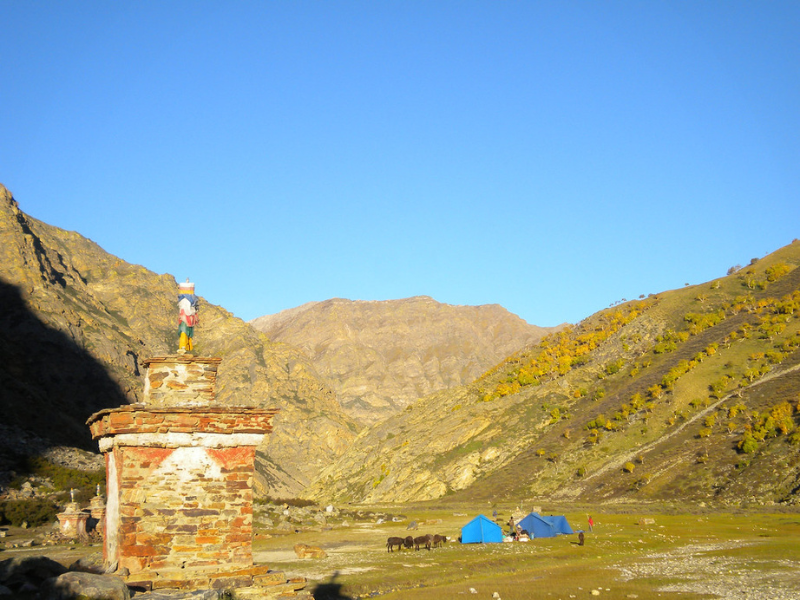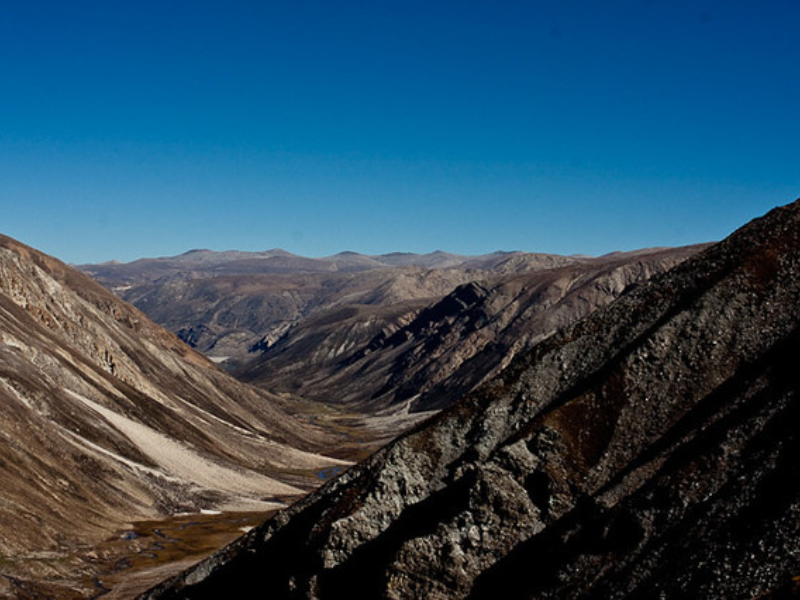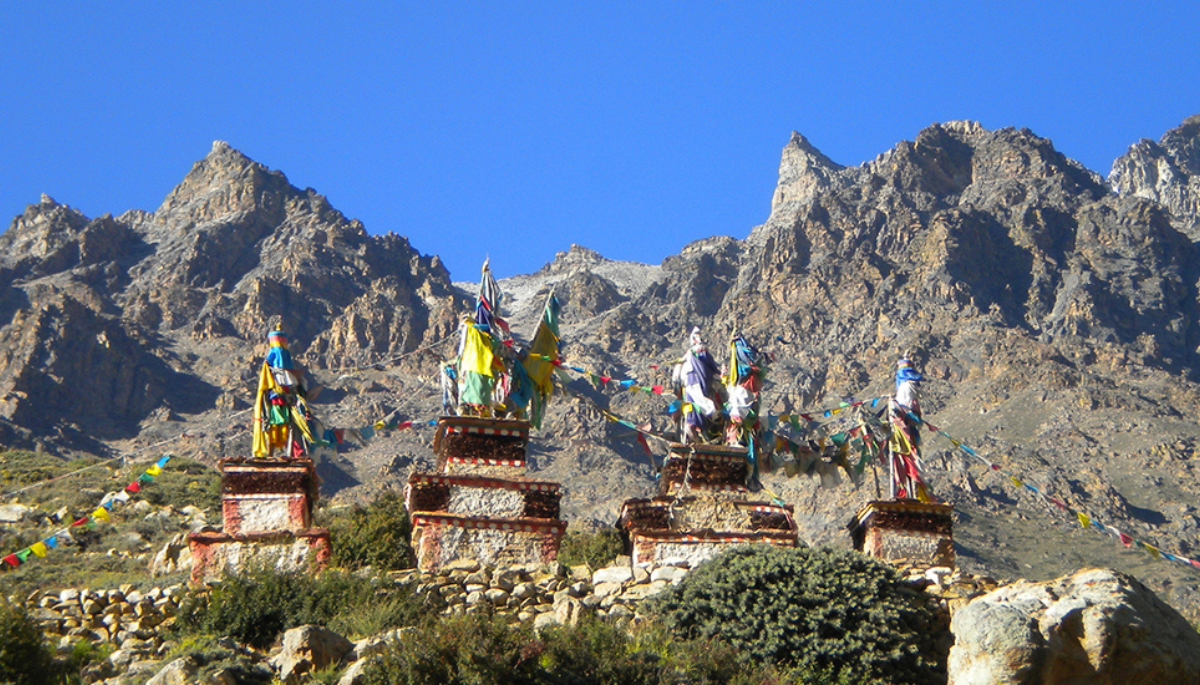Hidden deep in Nepal’s wild northwestern frontier, beyond the usual Himalayan treasures, lies the most secluded wonder, i.e., the Limi Valley Trek. This remotest trek through the Humla District assures a landscape where time trespasses and traditions stay. Snow-clad mountains shadow the ancient Tibetan establishments, endangered animals roam about, and 1,000-year-old monasteries resound with the chants of sanctity.
The Limi Valley Trek is the secret behind untamed natural beauty, genuine Himalayan culture, and true exposure off the beaten path; therefore, if you’re in search of trekking, you must follow this path. In 2025, take a few strides into that which is seldom explored-practically where the road ends.
Where is Limi Valley?
Limi Valley lies in Humla, which is the highest and most remote district of Nepal, bordering Tibet. The whole valley lies in the northern part of Karnali Province and forms the western part of the Great Himalayan Trail. Due to its proximity to Tibet, the region has been able to maintain the Tibetan Buddhist culture for centuries.
The valley has ancient monasteries, a caravan of yaks, and stone villages where time itself seems to have stopped. This isolation, although very arduous, is what makes the Limi Valley Trek so rare and fulfilling.

Why Choose the Limi Valley Trek?
Here’s the reason why the Limi Valley Trek is one clandestine adventure for the seasoned travelers of Nepal:
I. Untouched Culture and Heritage
The trek takes you through Tibetan-influenced villages like Til, Halji, and Jang. Halji has the celebrated Rinchhen Ling Monastery, almost a millennium old, much to the delight of the culture of the locality. The people here speak in a Tibetan dialect, follow ancient customs, and live a traditional life untouched by modern tourism.
II. Wilderness and Wildlife
Limi Valley lies inside the Humla-Karnali conservation area; hence, sighting wildlife should not come as a surprise. Expect blue sheep, Himalayan wolves, musk deer, and perhaps the white-coated ghostly form of a snow leopard to come gliding by. The rugged terrain poses a serious challenge to basic infrastructure, and hence, this valley remains beautifully wild and pristine.
III. Himalayan Landscape in All Glory
The trek provides magnificent views of Saipal Himal, Api, Kanjiroba, and, on a clear day, Mount Kailash as well. One crosses high mountain passes like Nyalu La (4,949m), walks alongside glaciated rivers, and camps beneath the stars far away from the well-being of civilization.
Limi Valley Trek Itinerary
The typical Limi Valley Trek itinerary includes the following:
- Day 1–2: Kathmandu – Nepalgunj – Simikot (2,910m)
- Day 3–7: Trek to Kermi, Yalbang, and Muchu
- Day 8–10: Cross Nyalu La, enter Limi Valley
- Days 11–13: Visit the villages of Halji, Jang, and Til
- Day 14–17: Return via Talung or Chuwa Khola
- Day 18–20: Trek back to Simikot and fly to Kathmandu.
Some of the itineraries may mention an extension of the tour to Hilsa, near the Tibetan border, or even a sacred side trip to Mount Kailash for those pilgrims holding Chinese permits.
Best Time for Limi Valley Trek
The perfect time is
- Spring (May-June): Lush vegetation and assured weather
- Autumn (September-October): Superb clear skies and local cultural festivals
Avoid being there during the monsoon (July-August) and harsh winters (November-February), as landslides or snow could block the trails.

Permits and Logistics
Since the Limi Valley Trek is a restricted area, you must have
- A Restricted Area Permit for Humla
- A TIMS (Trekkers’ Information Management System) card
You must travel with a registered trekking agency and accompany a licensed guide. Independent trekking is not allowed.
Due to its remote location, you need to have a reasonable level of fitness for this trek. You can either do a tent-supported trek or a teahouse trek with prior planning. Considering the weather dependence of flights to Simikot, always keep a couple of buffer days.
Before You Go: Limi Valley Trek Tips
- Carry warm layers for freezing nights at altitude.
- A water purifier is the best option for drinking, as clean water is sometimes unavailable.
- Bring some basic provisions and snacks, as villages are so remote
- Always respect local customs. Ask before you click photos of any monastery
- Hire local guides and porters to help the local economy
Conclusion
The Limi Valley Trek is not limited to being a sightseeing opportunity. It is a journey inside the untouched soul of Nepal. It is about solitude, binding oneself spiritually to spiritual grounds, and the euphoria felt by walking in the shoes of just a few. If you want to experience some real Adventure in 2025, the Limi Valley Trek will provide you with some memories so cosmic that they will seem to belong to myth-real, rare, and unforgettable.
Read More: Complete Trekking Guide for Tsum Valley Trek


0 Comment